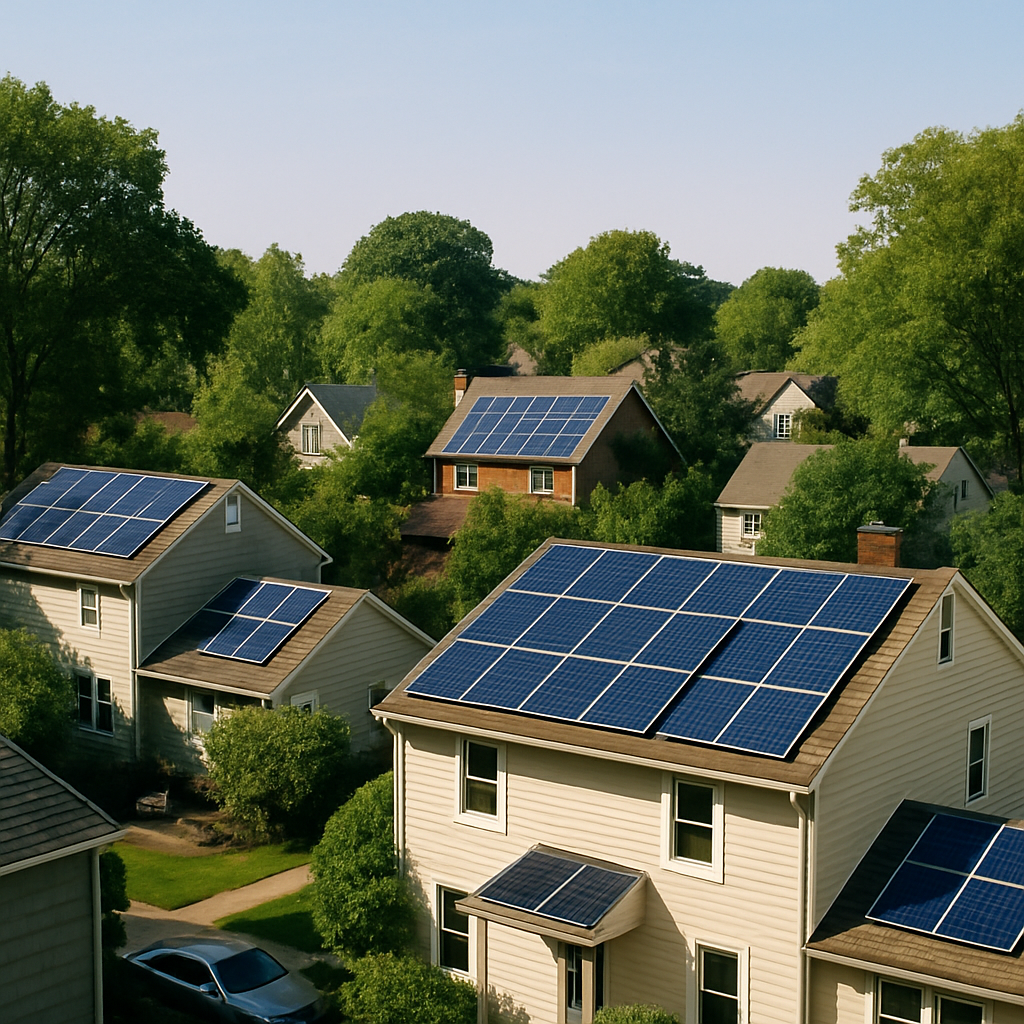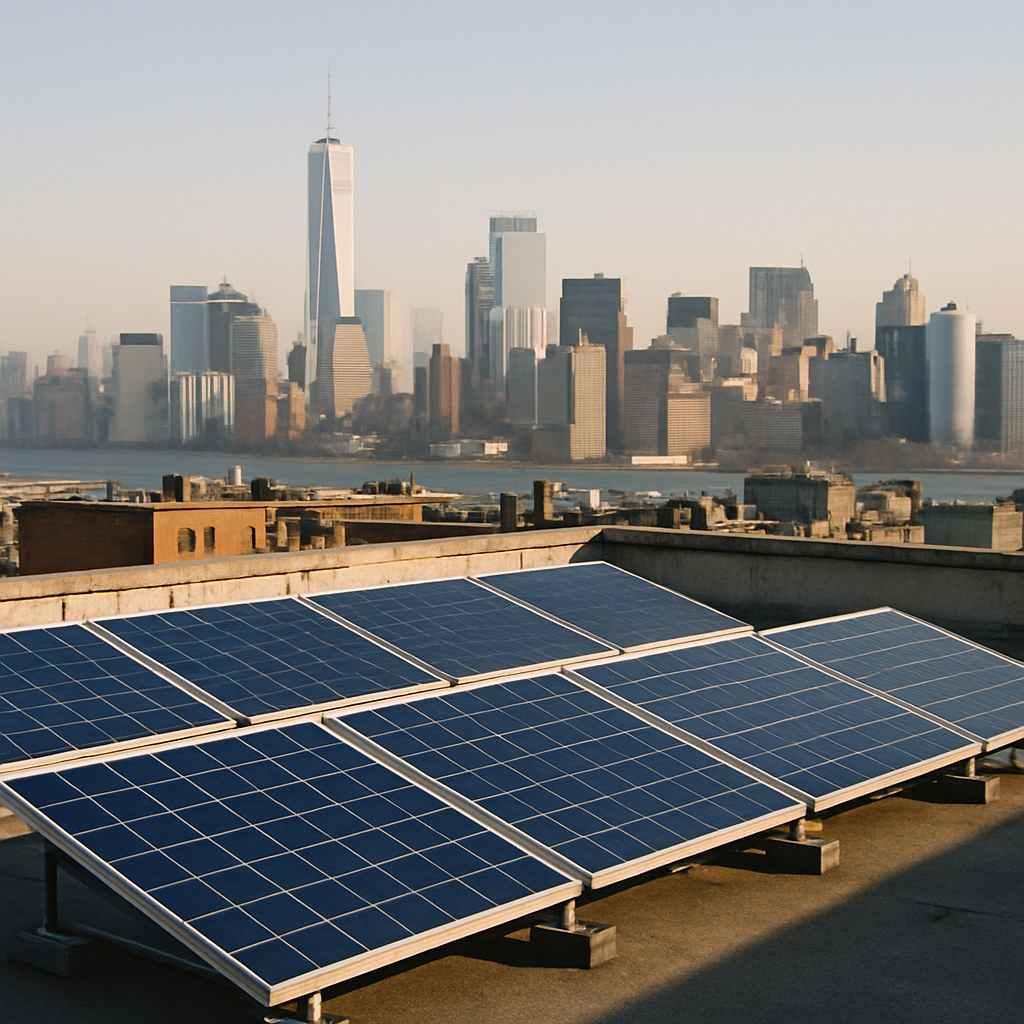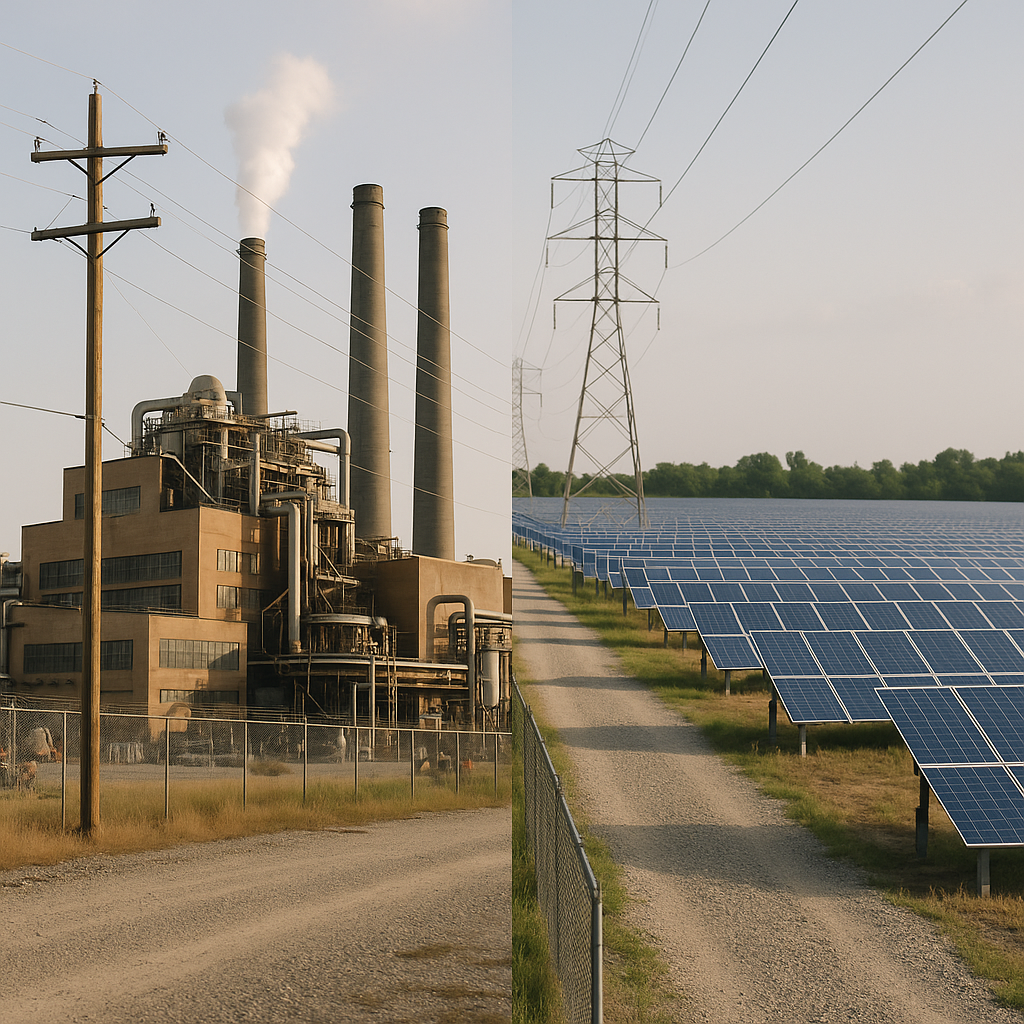5901 Botham Jean Blvd, Dallas, TX 75215
What Is Solar Panel Sustainability?
June 5, 2025Solar panel sustainability represents a significant intersection of renewable energy advancement and environmental stewardship. These innovative systems harness the unlimited power of sunlight to convert it into clean electricity without producing harmful emissions.
Unlike traditional fossil fuels that release carbon dioxide and other greenhouse gases when burned, solar panels generate power through a pollution-free process. This fundamental difference makes solar energy a cornerstone in the global transition toward greener power solutions.
The concept of solar panel sustainability extends beyond just clean energy production. It encompasses the entire lifecycle of these systems—from responsible manufacturing practices to efficient operation and eventual recycling. As technology evolves, solar panels are increasingly embedded in our energy infrastructure, offering a truly renewable alternative that can power our future without depleting natural resources or harming our planet.
How Do Solar Panels Support Environmental Sustainability?

Solar panels play a crucial role in environmental sustainability by capturing energy directly from the sun. This renewable resource produces zero greenhouse gas emissions during operation. Unlike fossil fuels that emit carbon dioxide and other pollutants, solar energy generation creates no air pollution or water contamination.
The carbon footprint reduction from solar panels is significant. A typical residential solar system offsets about 100,000 pounds of carbon dioxide over its lifetime, equivalent to the emissions from driving an average car for approximately 100,000 miles. Organizations switching to solar often see immediate environmental benefits through reduced carbon emissions.
The longevity of solar panels further enhances their sustainability. Most systems operate efficiently for 25-30 years with minimal maintenance. This extended lifespan means fewer replacements and less manufacturing impact compared to shorter-lived energy technologies. The durability of modern solar panels ensures they continue producing clean energy through various weather conditions with only occasional cleaning required.
Reduced Resource Consumption
Solar energy systems significantly decrease reliance on finite resources. Every kilowatt-hour generated from solar panels means less coal, natural gas, or oil needs to be extracted and burned. This preservation of non-renewable resources helps protect natural landscapes from mining and drilling operations that often cause habitat destruction and ecosystem disruption.
Water conservation is another crucial environmental benefit. Conventional electricity production consumes large amounts of water for cooling and processing. Solar panels require virtually no water during operation, except for occasional cleaning. In regions facing water scarcity, this advantage becomes even more significant.
The materials used in solar panels also contribute to sustainability. Silicon, the primary component in most photovoltaic cells, is derived from sand, one of Earth’s most abundant resources. Advances in manufacturing continue to reduce the energy required to produce panels, further improving their overall environmental profile.
Environmental Impact Throughout the Lifecycle
Solar panels deliver their greatest environmental benefits during operation. The manufacturing process does require energy and resources. However, this initial environmental investment is typically recovered within 1-4 years of operation. After this energy payback period, solar panels generate completely clean electricity for decades.
The end-of-life management of solar panels continues to improve. Recycling programs now recover up to 95% of certain panel materials, including valuable components like silver and silicon. The solar industry actively develops more efficient recycling methods to minimize waste and recover precious materials.
Beyond direct environmental benefits, solar panels support sustainable development by creating clean energy jobs and reducing energy dependence. The decentralized nature of solar power also reduces transmission losses in the electrical grid and decreases the need for environmentally disruptive power lines.
| Environmental Benefit | Solar Panels | Fossil Fuels |
| Carbon Emissions | Zero emissions during operation | High emissions of CO2 |
| Air Pollution | No air pollutants | Releases nitrogen oxides and other pollutants |
| Water Usage | Minimal water required | Significant water usage for cooling |
| Resource Consumption | Uses abundant silicon | Depletes finite resources like coal and oil |
| Impact on Climate | Helps mitigate climate change | Contributes to global warming |
Solar panels help mitigate climate change through significant carbon emission reductions. Each megawatt-hour of solar electricity prevents approximately 0.8-1 metric tons of CO₂ emissions compared to fossil fuel generation. This clean energy source helps communities meet sustainability goals while providing reliable power that reduces overall environmental harm.
What Are the Long-Term Environmental Benefits of Solar Panels?

Solar panels offer significant environmental benefits over their 25-30 year lifespan. A single 100kW solar system prevents approximately 3,227 metric tons of CO2 emissions throughout its operational life. This reduction equates to the emissions from driving over 8 million miles in a standard gasoline vehicle or burning more than 3.6 million pounds of coal.
The carbon payback period for solar panels is brief, typically just a few years. After this period, solar panels generate clean, emissions-free electricity for decades, providing an exceptional return on the initial carbon investment compared to fossil fuels.
Solar energy reduces dependence on fossil fuels that currently dominate electricity production. Natural gas power plants alone contribute approximately 34% of all energy-related carbon dioxide emissions in the US. By displacing this fossil fuel generation, solar panels help break the cycle of greenhouse gas emissions that accelerates climate change.
The environmental advantages extend beyond carbon reduction. Solar installations require minimal maintenance, reducing the resource consumption associated with regular repairs and replacements. When placed on existing structures like rooftops, solar panels preserve natural landscapes and wildlife habitats that might otherwise be disturbed by conventional power generation facilities.
As utility companies continue raising electricity rates to fund infrastructure upgrades, solar panels provide stable, predictable clean energy. This shields users from increasing costs while simultaneously reducing environmental impact. According to data from 2021-2022, commercial electricity rates increased by 6.2% while industrial rates rose by 8.7% – a trend expected to continue as demand grows.
| Solar System Size | CO2 Emissions Avoided (metric tons) |
| Standard Residential System | 23 |
| 100 kW System | 3,227 |
How Does Solar Panel Sustainability Impact Energy Infrastructure?

Solar panel sustainability is fundamentally transforming our energy infrastructure by creating a more resilient and environmentally responsible power generation system. This shift goes beyond adding new power sources to the grid; it reimagines how we produce, distribute, and consume electricity.
Integrating solar panels into existing energy systems offers unique advantages. Unlike fossil fuels, solar energy is abundant and non-rival. The U.S. Department of Energy reports that approximately 173,000 terawatts of solar energy continuously strike the Earth’s surface, enough to power the world 10,000 times over. This abundance allows for widespread adoption without concerns about resource depletion.
Grid modernization is crucial for solar sustainability’s impact on infrastructure. Traditional power grids were designed for one-way energy flow from large centralized plants to consumers. Solar integration requires smarter, bidirectional grids capable of handling distributed energy resources. These advanced grid systems incorporate energy storage solutions and smart technologies to efficiently balance supply and demand.
Energy security improves significantly with increased solar adoption. Diversifying the energy mix with solar power reduces dependence on imported fuels and mitigates risks associated with volatile fossil fuel markets. Countries embracing solar infrastructure become less vulnerable to external energy supply disruptions and price fluctuations, creating a more stable foundation for economic development.
Local communities benefit directly from solar infrastructure development. Distributed solar installations, from rooftop panels to community solar gardens, empower neighborhoods to generate their own electricity. This localized approach to energy production reduces transmission losses and strengthens community resilience against centralized grid failures. Many regions previously underserved by traditional infrastructure now gain access to reliable electricity through solar solutions.
The economic impact of solar sustainability extends throughout the energy sector. Investments in solar infrastructure create significant employment opportunities in manufacturing, installation, and maintenance. Additionally, the decreasing costs of solar technology make electricity more affordable, particularly in rural and developing regions. This economic accessibility drives further adoption and expands the benefits of clean energy to more communities.
Infrastructure development for solar sustainability requires thoughtful planning. Beyond the panels themselves, supportive infrastructure includes energy storage systems, advanced inverters, and monitoring technologies. These components ensure solar energy remains available when needed, even during cloudy periods or at night. Such technological integration represents a crucial evolution in our energy systems.
As solar panel sustainability advances, energy infrastructure will evolve toward greater flexibility and resilience. The transition from rigid, centralized systems to dynamic, distributed networks creates opportunities for innovation throughout the energy sector. This structural transformation enables more efficient resource utilization and reduces the environmental impact of meeting our growing energy needs.
Conclusion: The Future of Solar Panel Sustainability
Solar panel technology is leading our shift to renewable energy sources. These systems reduce greenhouse gas emissions while generating clean electricity with minimal environmental impact during operation. The solar industry continues to advance with innovations in panel efficiency, recycling processes, and the implementation of circular economy principles.
As global solar adoption increases, proper end-of-life management becomes crucial for maintaining the technology’s environmental benefits. Through responsible material recovery and sustainable manufacturing practices, solar panels will be key in creating a carbon-neutral future. For assistance with solar panel recycling or other electronic waste management needs, contact Okon Recycling at 214-717-4083.
